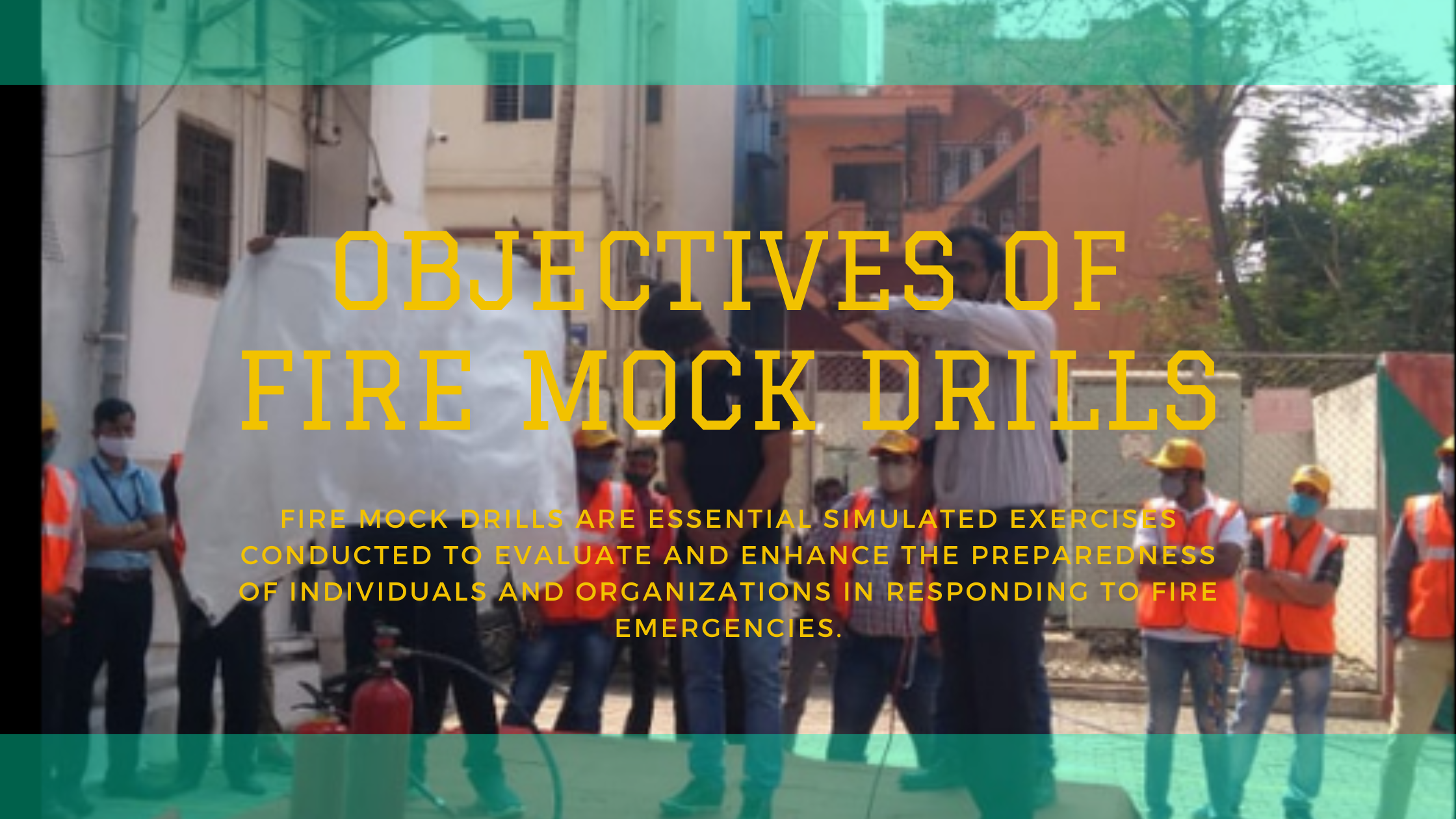![]()
Fire Immuniser
+91-7829629111
Email: info@variex.in
Varistor Technologies Pvt. Ltd.
Block-1, First Floor, Ardente Office One, Hoodi Circle, ITPL Main Road, Bengaluru, Karnataka 560048, IN
Objectives of Fire Mock Drills
Fire mock drills are essential simulated exercises conducted to evaluate and enhance the preparedness of individuals and organizations in responding to fire emergencies. These drills serve specific objectives aimed at ensuring swift, safe, and effective actions during actual fire incidents.
1. Testing Emergency Response Plans
Fire mock drills provide an opportunity to assess the effectiveness of existing fire emergency response plans and procedures. By simulating fire scenarios, organizations can identify gaps, weaknesses, and areas needing improvement in their firefighting and evacuation protocols.
2. Training and Skill Development
They serve as practical training sessions for employees, ensuring they understand their roles and responsibilities during a fire emergency. Participants practice using fire extinguishers, evacuation routes, and assembly points, enhancing their firefighting and evacuation skills.
3. Familiarization with Fire Safety Equipment
Fire mock drills familiarize participants with the location and operation of fire safety equipment, such as fire extinguishers, fire alarms, sprinkler systems, and emergency exits. This familiarity ensures that employees can promptly and effectively utilize these resources in real fire emergencies.
4. Testing Communication and Alarm Systems
Effective communication is critical during fire emergencies. Mock drills test communication systems, including fire alarms, intercoms, and emergency notification procedures, to ensure they function correctly and enable prompt evacuation and coordination among responders.
5. Assessing Evacuation Procedures
Fire mock drills evaluate the efficiency of evacuation procedures, including the speed and effectiveness of evacuating personnel from different areas of the building or premises. They identify bottlenecks, obstacles, or areas where evacuation routes need improvement.
6. Behavioral Assessment and Decision-Making
Observing participants' reactions and decision-making processes during fire mock drills provides insights into human behavior under stress. It helps assess how well employees remain calm, follow procedures, and make informed decisions during a fire emergency.
7. Ensuring Compliance and Safety Standards
Conducting fire mock drills helps organizations comply with fire safety regulations and standards. Regular drills ensure that employees are aware of fire safety protocols and contribute to creating a safer work environment.
8. Building Confidence and Preparedness
Participation in fire mock drills builds confidence among employees, as they gain practical experience and knowledge about responding to fire emergencies. It fosters a proactive approach to fire safety and preparedness within the organization.
9. Continuous Improvement
Post-drill evaluations are crucial in identifying lessons learned and areas for improvement in fire emergency preparedness. Feedback from participants and observers helps refine fire emergency plans, update training programs, and enhance overall readiness for future fire incidents.
10. Promoting Safety Culture
Fire mock drills promote a culture of safety within organizations, emphasizing the importance of fire prevention, preparedness, and response. They educate employees about fire hazards, prevention measures, and the significance of being vigilant and proactive in fire safety.
In conclusion, fire mock drills play a critical role in ensuring that organizations are well-prepared to respond effectively to fire emergencies. By simulating realistic fire scenarios and evaluating response capabilities, these drills contribute to saving lives, minimizing property damage, and maintaining business continuity in the face of fire incidents.
Frequently Asked Questions
A fire mock drill is a simulated exercise conducted to evaluate and enhance the preparedness of individuals and organizations in responding to fire emergencies. It involves simulating a fire scenario to test response procedures, evacuation plans, and the effectiveness of firefighting equipment.
Fire mock drills are important because they allow organizations to assess their readiness to handle real fire emergencies. They help identify weaknesses in emergency response plans, improve coordination among employees, familiarize personnel with fire safety equipment, and ensure compliance with safety standards.
Fire mock drills typically involve all employees within an organization, from executives to frontline staff. In larger organizations, specific teams such as fire wardens, safety officers, and first aid responders may have designated roles during the drill to simulate a coordinated response.
The frequency of fire mock drills depends on various factors, including regulatory requirements, the size and complexity of the organization, and the nature of the workplace hazards. Generally, fire drills are conducted at least annually, but some industries or high-risk environments may require more frequent drills.
During a fire mock drill, a fire scenario is simulated, typically initiated by activating a fire alarm. Employees are required to follow evacuation procedures, use fire extinguishers if applicable, and assemble at designated muster points. Observers evaluate the drill to identify strengths and areas for improvement.
Final Say
At VariEx.in and VariexOnline.com, we specialize in supplying and installing top-quality fire fighting systems and equipment. From fire extinguishers to advanced suppression systems, we offer comprehensive solutions tailored to your needs. Our experienced team ensures precise installation and maintenance for optimal safety.
Trust VariEx for reliable fire protection. Contact us online or call 7829629111 to learn more.










